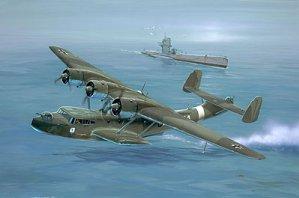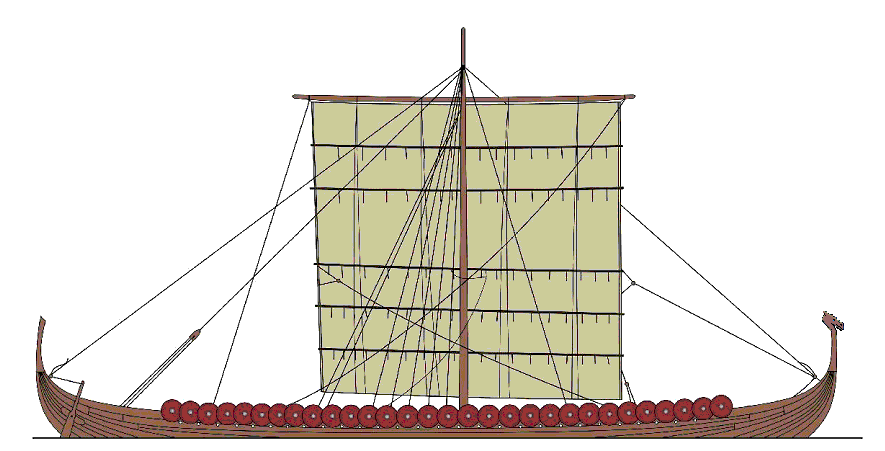
KriegsMarine - NAVAL PLANES - Scout Types ==========================================================================
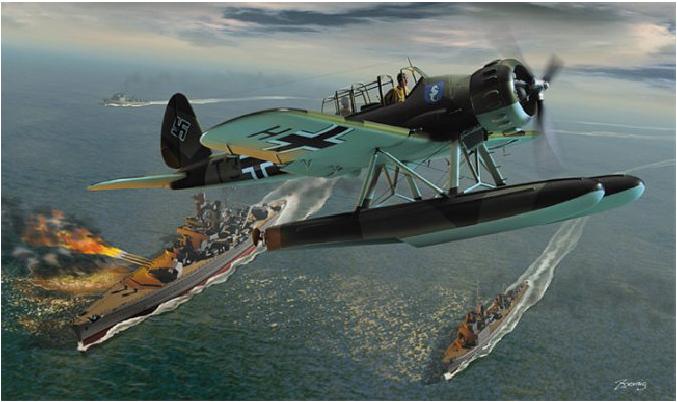


The Ar.196 monoplane was a development of the Ar.95 and the first prototype flew in 1938. Following a number of pre-production aircraft, production proper began with twenty Ar.196A-1, which were delivered from mid-1939. Production continued with A-2 to A-5 versions and a few modified single-float Ar.196B, the number of aircraft produced totalling about 435. Ar.196 seaplanes were operational with the German Navy in reconnaissance, patrol and anti-submarine roles throughout World War II and were for many years the standard catapult sea-plane of the Navy, up to four being carried on board some battleships.
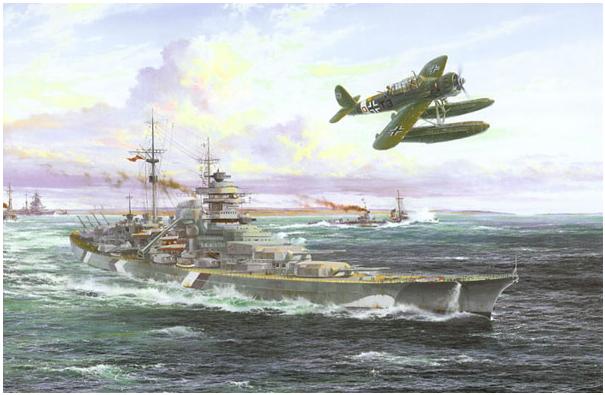

Developed as a naval torpedo-bomber and reconnaissance biplane for use from a proposed German aircraft carrier. The first prototype (built as a twin-float seaplane) first flew in 1936 and was followed by other seaplane and landplane prototypes, differing in engines fitted. The landplanes featured heavily trousered main landing gear legs. A change of direction led to the delivery of six aircraft to Spain, where they fought during the late stage of the Civil War. Six Ar.95 landplanes and seaplanes were exported to Chile in 1939 and those built for Turkey were retained for use by the Luftwaffe.

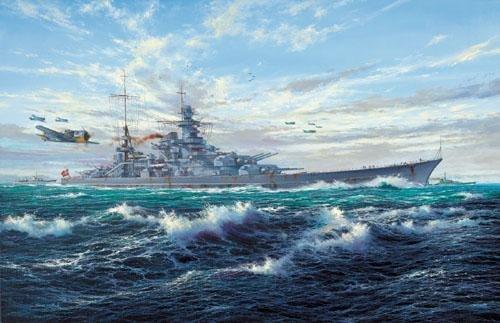

Development of the three-seat Dornier Do 22 floatplane was the responsibility of Dornier's Altenrhein factory in Switzerland, where.two prototypes were built. Of all-metal construction with fabric covering throughout, except for the metal-skinned forward fuselage, the Do 22 was powered by a Hispano-Suiza 12Ybrs engine driving a three-bladed propeller. The Do 22 carried a crew of three, the rear cockpit providing accommodation for a gunner, and a radio operator whose position in the front half of the cockpit was protected by a glazed canopy. Four 7.92mm MG 15 machine-guns were fitted, one in the forward fuselage above the engine, one in a ventral position and two in the rear cockpit. Although not ordered by the Luftwaffe, approximately 30 were built at Friedrichshafen in Germany and the first production aircraft was flown on 15 July 1938. Do 22s were supplied to the Greek, Yugoslav and Latvian air forces as the Do 22Kg, Do 22Kj and Do 22Kl respectively.
The Dornier Do 22 was a German seaplane developed in the 1930s. Its exceptional performance for the period made the fact that it was built entirely for the export market somewhat peculiar. Production aircraft never flew with German markings, though the prototype did. This Dornier was a three-seat torpedo bomber/reconnaissance seaplane, with a single parasol wing. The prototype and most of the production aircraft were in the seaplane configuration, though there was a land plane configuration developed as well. While the prototype was flown in 1935, the first production model did not fly until 15 July 1938. In March 1938 a prototype with conventional landing gear (L Model) was completed and test flown. There were a total of 31 airframes built.
It was built in Dornier factories in both Germany and Switzerland, with aircraft then being sold to Yugoslavia (12), Greece (also 12) and Finland (4).
The first deliveries of the Do-22K, twelve aircraft, went to Yugoslavia in 1938. Greece and Latvia were the other original customers, but Latvia was never destined to see theirs before being absorbed by the Soviet Union. Four aircraft originally intended for Latvia were sent to Finland by the German government.
During the German invasion of the Balkans of 1941, the Greek Do 22s were destroyed, but the crews of eight of the Yugoslav machines successfully evaded capture or destruction by fleeing to Egypt. There they flew under the control of the RAF until the lack of spare parts rendered them unusable.

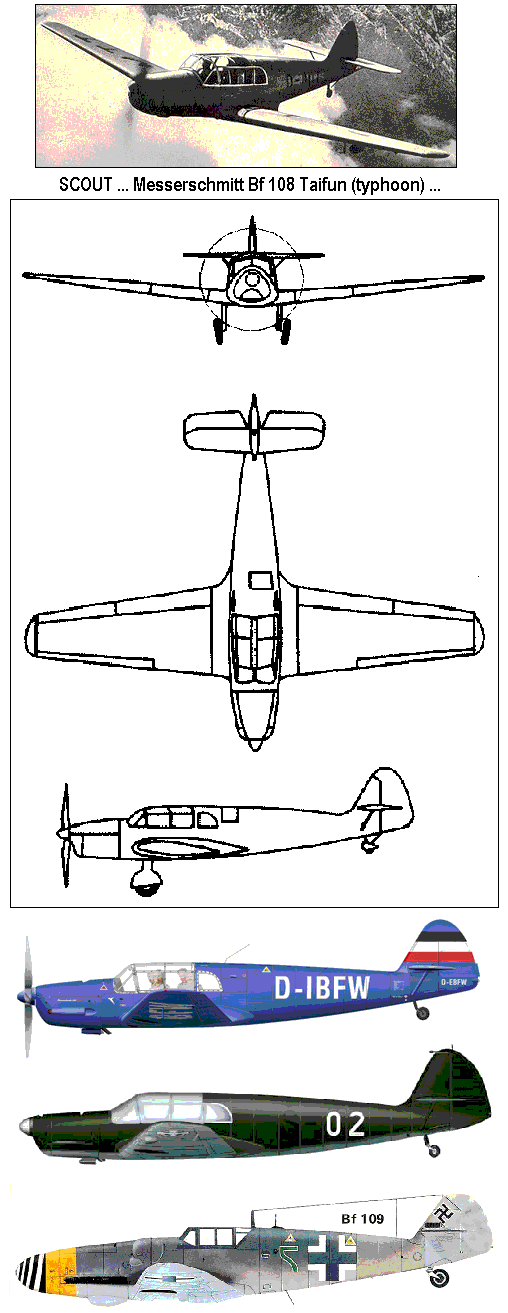
The Bf 108 was a fast cantilever low-wing four-seat cabin monoplane. The Bf 108 was of all metal construction. The Messerschmitt Bf 109 fighter plane used many of the same design features.
The Treaty of Versailles eliminated military aviation in Germany. To counteract that treaty, Germany found clever ways to prepare a resurgent air force, via such mechanisms as supporting extensive glider training and engaging in civil air transport development, which was permitted after 1922, as well as by establishing a clandestine base at Lipetsk, in the Soviet Union, that enabled the Germans to test new military designs and train a nucleus of highly skilled flyers while providing training for the Soviet Air Force.
While that hidden effort proceeded apace, the German government carefully gathered together the many strands of entrepreneurial airline formation into one, tightly controlled and focused entity, Deutsche Luft Hansa Aktiengesellschaft (German Air Union Incorporated) Luft Hansa.
Despite Allied efforts to totally eradicate German aircraft manufacture, the then illegal development of civilian transports was encouraged by no less than General Billy Mitchell, who induced Professor Junkers to continue building his newly designed F.13 transport, which had first flown three days before the signing of the Versailles Treaty, ordering the first 6 for the United States.
Similarly, unnamed American and Japanese interests approached Ernst Heinkel in 1920 for one of his designs for an aircraft that could be carried on a submarine. Heinkel began secretly building that aircraft in a plant at Travemunde, in complete violation of the treaty.
Once Germany was permitted, after 1922, to resume the manufacture of commercial aircraft, a door opened, through which an army of gifted aircraft designers rushed, creating aircraft that could, almost with the push of a button, convert from civilian/commercial use to military. One of the bright examples of that process was the Messerschmitt Bf 108 design, a record-breaking sports aircraft which would be used as the basis of the premiere German fighter plane of World War II, the Bf 109.
Messerschmitt refined its design for the M 35 2-seat aerobatic plane into the M 37 (later re-designated the Bf 108) specifically for competition in the 4th Challenge de Tourisme Internationale of 1934. Still a two-seat aircraft, it was powered by a 250hp Hirth HM 8U inverted-V piston engine, which drove a 3-blade propeller.
A record breaker when it was introduced 66 years ago, the Bf 108's performance is still impressive by contemporary personal sports-plane standards.
Originally designated the M-37 by the Bayerische Flugzeugwerke company (which became Messerschmitt in 1935), the aircraft was designed as a two-seat sports/recreation aircraft for competition in the 4th Challenge de Tourisme Internationale (1934).
The first part of the Challenge was technical trials and evaluation. On August 29 the technical evaluation of the competing planes' construction started. Since it was nominally a tourist plane contest, features such as: a comfortable cabin with a good view, the presence of a third and fourth seat, seats placed side-by-side, a rich set of controls, ease and time of engine starting, ease of wings' folding, safety devices and a modern construction with usage of metal, were also awarded with points. The view was evaluated by placing a lamp in the cab, in a dark hangar and examining light area. All the German aircraft, two Italian and the Puss Moth exceeded empty weight limit of 560.56 kg and had to have some unnecessary parts dismounted to shave weight. The first technical trial to be completed was a quick engine starting test, carried out on 31 August-1 September. Most aircraft scored the maximum 24 points in it.
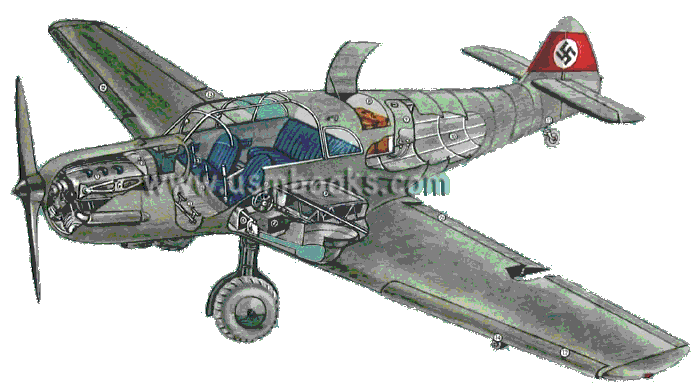
Technical evaluation lasted until September 4, and the most points were given to Bf 108s (450-452 pts), then Pallavicino PS-1 (438 pts), Fi 97s (428-431 pts), Aero A.200 (429 pts) and RWD-9 (427 pts). The rest followed: Klemm Kl 36 - 394-407 pts, PZL.26 - 383 pts, Puss Moth - 373 pts and Bredas - 323-346 pts.
On September 3-4, there was a short take off trial, which required the crews to fly over an 8 m high gate. The best was the Czech Vojtech acek, taking off from the closest distance 74.5 m (Aero A.200), then Jerzy Bajan (RWD-9) and Ján Ambru with the second A.200. The Polish RWD-9s and PZL.26s and the German Fi 97s were also high, while the Italians and most other German aircraft appeared worse, with results above 100 m.
After the technical evaluation and the short take-off trial, on September 4, leaders were the Germans flying Bf 108s: Theo Osterkamp (597 points), Werner Junck (596 points) and Otto Brindlinger (594 points), then Vojtech acek (A.200, 594 points), Jerzy Bajan (RWD-9, 591 points) and Ján Ambru (A.200, 591 points), then German Fi 97s and Polish RWD-9s.
Next, on September 4-5 followed a short landing trial, behind an 8-m high gate. The best result, 75 m (210 points) achieved Hans Seidemann (Fi 97). In the first ten scores there were other Fieselers, the Polish RWD-9s and PZL.26s and MacPherson's Puss Moth. The Czech A.200s had worse results (above 117 m), along with Bredas and Bf 108s.
A fuel consumption trial on a 594-km closed circuit was held on September 5. The best scores were three Bf 108s, which swept top honors and took 1st, 2nd, and 3rd place in the fuel consumption trials.
One German and one Italian crew managed to damage their aircraft (Bf 108 and PS-1) during the technical trials segement and had to quit. It was however the best ratio of crews to complete the technical trials of all previous Challenges. Generally, top places were taken by RWD-9s and Fi 97s, while Bf 108s, Kl 36s and PZL.26s proved average, and Italian machines closed the list.
The second part of the Challenge was a 9537.4 km rally over Europe and northern Africa, on a path: Warsaw - Königsberg - Berlin - Köln - Brussels - Paris - Bordeaux - Pau - Madrid - Seville - Casablanca - Meknes - Sidi Bel Abbes - Algiers (stage waypoint) - Biskra - Tunis - Palermo - Napoli - Rome - Rimini - Zagreb - Vienna - Brno - Prague - Katowice - Lwów - Wilno - Warsaw. There were also 8 checkpoints, among others, in Tanger, Messina and Castelfranco Veneto. The route was far longer and more difficult, than in previous contests. Awarded were, first of all, a cruise speed on a whole track, then a regularity of flight. Three nights apart from appointed airfields or a cruise speed below 130 km/h caused disqualification.
The rally started on September 7, in rain, between 5 and 5.30 am. The Bf 108s could take advantage of their speed and were first to reach Berlin. That day 24 fastest crews reached Paris, flying 1752.4 km (10 Poles, 8 Germans, 3 Czechs and 3 Italians).
On the next day, many crews, who started early, especially flying Bf 108s, had problems with locating an airfield in Bordeaux due to heavy fog and had forced landings, lowering their cruise speed (on that occasion, Theo Osterkamp and Gerhard Hubrich had problems with the local police). 14 crews reached Seville that day, 9 stayed in Madrid, while the last 2 crews remained in Bordeaux, 2 Poles (Andrzej Wlodarkiewicz and Szczepan Grzeszczyk on PZL.26s) reached as far, as Casablanca (3715.2 km)..
On September 9 all crews, that remained in the rally, reached Africa, with Andrzej Wlodarkiewicz and three Bf 108s being in the lead. 18 crews reached Algiers that day (9 Poles, 6 Germans and 3 Czechs), flying 4774 km in total. The last two crews reached Meknes, including Stanislaw Plonczynski. Several crews withdrew that day:
On September 10 the rest reached Algiers, and thus 24 crews completed the first part of the rally. The Pole Stefan Florjanowicz (RWD-9) had to withdraw there due to engine fault.
The contestants left Algiers on September 11, after a rest, and 23 crews reached Tunis that day.
On September 12, the crews left for Palermo, over the Mediterranean Sea. The flight was secured by the Italian Navy and the French floatplanes. 22 crews reached Rome that day, one Italian pilot withdrew due to engine damage.
On September 13 the weather was bad, however, all but two crews reached Prague (7924 km). The fastest that day was Theo Osterkamp (Bf 108), but the two other Bf 108 pilots had forced landings near Trieste due to weather and spent the night at Zagreb, which lowered their cruise speed scores.
On September 14, sixteen crews finished in Warsaw. Among them were five Poles, six Germans, three Czechs and two Italians. That day, the fastest Polish pilot Andrzej Wlodarkiewicz (PZL-26) had to land near Tarnów before Lwów and withdrew due to engine fault, also Walter MacPherson (Puss Moth) dropped out for the same reason before Lwów.
On September 15, the last three crews reached Warsaw (Werner Junck and Karl Francke flying Bf 108s and Piotr Dudzinski flying PZL.26). The last to drop out was Jan Balcer (PZL.26) due to a compressor damage, before Wilno.
Only 19 crews out of 32 completed the rally. In spite of highest maximum cruise speeds, the scores of the fastest planes (Bf 108s) was hampered by low cruise speed penalties in other stages of the rally. Therefore the best results were obtained by pilots, who managed to maintain a good average cruise speed during the whole rally. All participants, who completed the rally, scored the maximal amount of 160 points for regularity, and spending nights on appointed airfields only. In this race the Bf 108 took 5th place.
After the technical trials and the race, Jerzy Bajan held first place overall in the general classification with 1855 points, with Stanislaw Plonczynski in second (1821 pts), Hans Seidemann in third (1813 pts), followed by two Czechs, Ján Ambru (1795 pts) and Jan Anderle (1770 pts). The German Bf 108 pilots were 12th (Werner Junck - 1733 pts), 13th (Theo Osterkamp - 1729 pts) and 15th (Karl Francke - 1715 pts).
The third and last part of the Challenge was a maximum speed trial, held on a 297 km triangular course. The trial was carried out on Sunday, September 16, at 4 pm, at the Mokotowskie airfield in Warsaw.
Due to a handicapping system, contestants took off in order of general classification, with proper intervals, and an amount of points given from the speed trial results, which meant that the first plane on the finishing line would be the winner of the contest. Each km/h above 210 km/h was awarded with one point.
As with fuel consumption trial, the Bf 108s again swept top honors. The fastest were three German Bf 108s (291 km/h). The next three places were taken by the Polish RWD-9s:. The Pole Ignacy Giedgowd (PZL.26) and the Italian Ernesto Sanzin (Ba-39S) had to land due to engine faults and scored 0 points.
While the Bf 108s managed to improve their overall positions, the first four places in general classification remained basically unchanged, with the Bf 108s now taking 5th, 6th, and 10th overall.
General Classification Overall Results:
1. Jerzy Bajan Poland RWD-9S
2. Stanislaw Plonczynski Poland RWD-9S
3. Hans Seidemann Nazi_Germany Fieseler Fi 97
4. Ján Ambru Czechoslovakia Aero A.200
5. Theo Osterkamp Nazi_Germany Bf 108A
6. Werner Junck Nazi_Germany Bf 108A
7. Jan Buczynski Poland RWD-9S
8. Jan Anderle Czechoslovakia RWD-9W
9. Georg Pasewaldt Nazi_Germany Fieseler Fi 97
10. Karl Francke Nazi_Germany Bf 108A
11. Piotr Dudzinski Poland PZL.26
12. Kurt Bayer Nazi Germany Fieseler Fi 97
13. Wolf Hirth Nazi Germany Fieseler Fi 97
14. Vojtech acek Czechoslovakia Aero A.200
15. Henryk Skrzypinski Poland RWD-9W
16. Gerhard Hubrich Nazi Germany Fieseler Fi 97
17. Ignacy Giedgowd Poland PZL.26
18. Armando François Italy Pallavicino PS-1
19. Ernesto Sanzin Italy Breda Ba-39S
Although it was outclassed by lighter aircraft in the competition, the Bf 108's performance marked it as a popular choice for record flights.
The 2-seat aircraft was impressive enough to promote the design's evolution into a four-seat touring aircraft that was also well-suited for military communication, liaison and ambulance roles. Other changes incorporated in the Bf 108B included the replacement of a tailskid with a tailwheel, and a different powerplant, the 240 hp Argus As 8C inverted-V piston engine, which drove a 2-blade propeller. Most of the 885 Bf 108 aircraft manufactured were of this version, which was built first by Messerschmitt and later by Societe Nationale de Constructions Aeronautiques du Nord, in France, during and after the war.
The A version first flew in 1934, followed by the B version in 1935. The B version used the Argus As 10 inverted V, air cooled engine.
Soon after the first production aircraft began to roll off the assembly line in Augsburg, several Bf 108s had set new endurance records, one of which led to its "christening." German aviatrix Elly Beinhorn (the second woman to fly solo around the world) flew a Bf 108A, named "Taifun" (typhoon) from Berlin to Constantinople in one day, an accomplishment that led Messerschmitt to apply the name "Taifun" to all subsequent production models of the Bf 108. (German plane classes were normally designated by an Alpha-Numeric code rather than a name).
The Bf 108 was adopted into Luftwaffe service during World War II, where it was primarily used as a personnel transport and liaison aircraft.
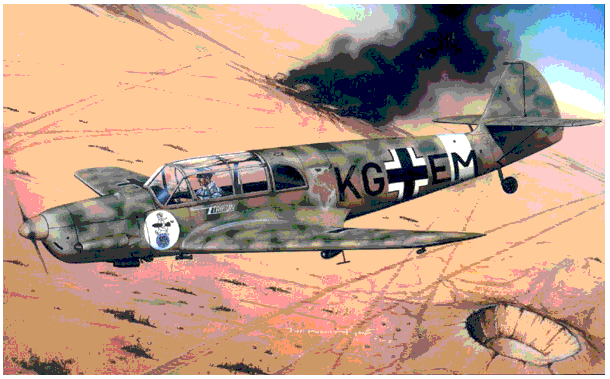
Production of the Bf 108 was transferred to occupied France during World War II and production continued after the war as the Nord 1000 Pingouin.
Bf 108s, or perhaps postwar Nord 1000s, played the role of Messerschmitt Bf 109 fighters in some movies, including The Longest Day, 633 Squadron, and Von Ryan's Express.
The plane involved in the famous Mechelen Incident was a Bf 108.
The Mechelen Incident of 10 January, 1940 also known as the Mechelen affair, was an incident involving a German plane with an officer on-board carrying the plans for Fall Gelb, (a proposed German attack on the Low Countries), which crash-landed in neutral Belgium near Vucht, in the present municipality of Maasmechelen. This revealed the German plans to the French and British command and caused an immediate crisis situation, that however soon abated. It has been argued that the incident led to a major change in the German attack plan, but this hypothesis has also been disputed.


=================================================================================
NB: The above text has been collected / excerpted / edited / mangled / tangled / re-compiled / etc ... from the following online sources :
SCOUT - Ar 196A-3 - www.aviastar.org article #1
SCOUT - Ar 95 - www.aviastar.org article #2
SCOUT - Dornier Do 22 - www.aviastar.org article #3
SCOUT - Messerschmitt Bf 108 - www.aviastar.org article #4
SCOUT - Messerschmitt Bf 108 - wikipedia
SCOUT - Messerschmitt Bf 108 - www.warbirdalley.com
Challenge International de Tourisme 1934 - wikipedia
KM - Index of Planes - www.aviastar.org
